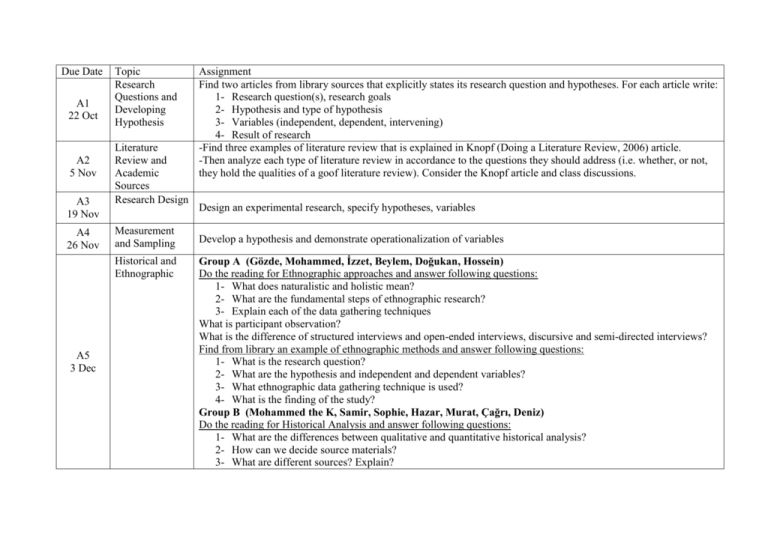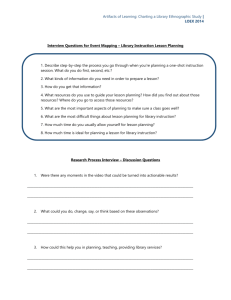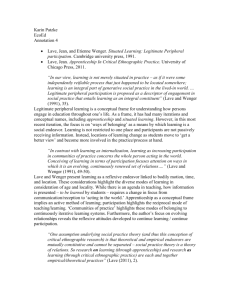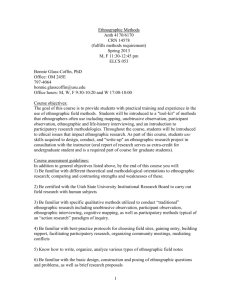PSIR 501 Assignments
advertisement

Due Date A1 22 Oct A2 5 Nov A3 19 Nov A4 26 Nov Topic Research Questions and Developing Hypothesis Literature Review and Academic Sources Research Design Measurement and Sampling Historical and Ethnographic A5 3 Dec Assignment Find two articles from library sources that explicitly states its research question and hypotheses. For each article write: 1- Research question(s), research goals 2- Hypothesis and type of hypothesis 3- Variables (independent, dependent, intervening) 4- Result of research -Find three examples of literature review that is explained in Knopf (Doing a Literature Review, 2006) article. -Then analyze each type of literature review in accordance to the questions they should address (i.e. whether, or not, they hold the qualities of a goof literature review). Consider the Knopf article and class discussions. Design an experimental research, specify hypotheses, variables Develop a hypothesis and demonstrate operationalization of variables Group A (Gözde, Mohammed, İzzet, Beylem, Doğukan, Hossein) Do the reading for Ethnographic approaches and answer following questions: 1- What does naturalistic and holistic mean? 2- What are the fundamental steps of ethnographic research? 3- Explain each of the data gathering techniques What is participant observation? What is the difference of structured interviews and open-ended interviews, discursive and semi-directed interviews? Find from library an example of ethnographic methods and answer following questions: 1- What is the research question? 2- What are the hypothesis and independent and dependent variables? 3- What ethnographic data gathering technique is used? 4- What is the finding of the study? Group B (Mohammed the K, Samir, Sophie, Hazar, Murat, Çağrı, Deniz) Do the reading for Historical Analysis and answer following questions: 1- What are the differences between qualitative and quantitative historical analysis? 2- How can we decide source materials? 3- What are different sources? Explain? Discourse and Content Analysis 4- What is selectivity? How can it be minimized? Find from library an example of historical analysis and answer following questions: 5- What is the research question? 6- What are the hypothesis and independent and dependent variables? 7- What ethnographic data gathering technique is used? 8- What is the finding of the study? All students: Do the readings for Discourse Analysis and Content Analysis to answer following questions: 1- Which theory is the basis of discourse analysis? 2- What prerequisite(s) the researchers need? 3- What are the fundamental steps in discourse analysis? Briefly explain each step. 4- What is content analysis? 5- What is the difference between discourse and content analysis? 6- What are the possible steps of a content analysis? Briefly explain each step. Group A (Gözde, Mohammed, İzzet, Beylem, Doğukan, Hossein) Read Articles A1 and B1 A6 and A7 10 Dec Group B (Mohammed the K, Samir, Sophie, Hazar, Murat, Çağrı, Deniz) Read Articles A2 and B2 Answer following questions for respective articles: 1- What are the research questions? What are the hypotheses and independent and dependent variables? How are they operationalized? 2- What is the level of analysis? How are the cases selected? 3- What is the data? How is it selected and accessed? 4- How did the researchers employ their analysis? a) Whose discourse is analyzed? b) What content is analyzed? 5- What is the finding of the study? 6- How did the researcher(s) address reliability and/or validity of their study? A8 Process tracing 17 Dec Extra 24 Dec











